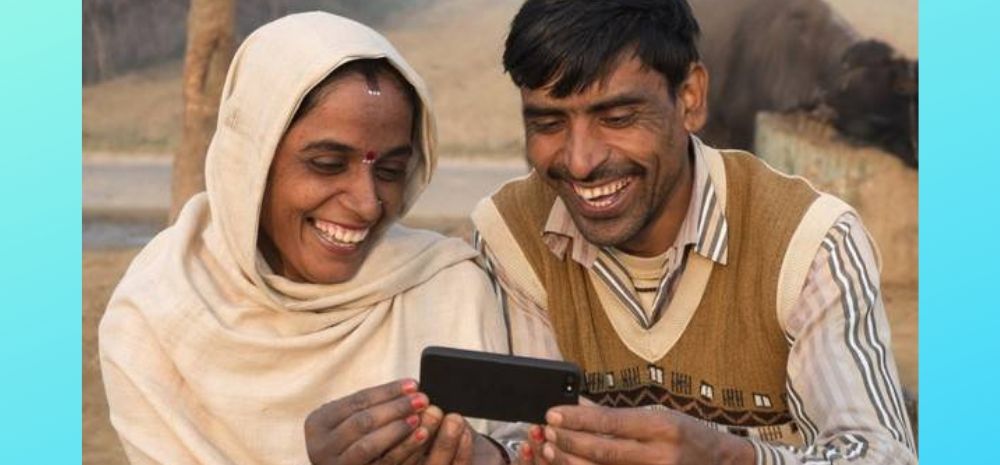25 Years Of The Great India Internet Journey: What Should Be Our Goal For Next 5 Years?

Authored by Raunak Maheshwari, Director, Extreme Labs
Technology has been and continues to be one of the critical elements that impact human life.
Every new technology brings with it a wave of transformation that sweeps over the personal, professional, social, and economic aspects for corporates and consumers globally.
India has also witnessed the impact of technology on its commercial, public, and social sectors over the last 25 years. One of the key technologies for India has been Wireless connectivity.
Not only has wireless connectivity seen a tremendous evolution over the years, but its advancement has been at a pace much faster than its adoption.
From dial-up modems to 4G connectivity available in small towns, India has come a long way in the past 25 years with the next 5 years poised to continue this evolution at an exponential pace
For the generation today, 4G and high-speed WiFi connectivity are necessities and going ahead, technologies such as IoT (Internet of Things) and 5G will play a crucial role in influencing the lifestyles of the generation.
Contents
India’s Ever-Expanding Internet Population
If we talk about numbers, a massive 4.6 billion people today use the internet and send out billions of gigabytes of data over the World Wide Web every day.
Not only has the Internet-connected the world, but it has also lead to making national, social, and economic boundaries less consequential. The internet has completely changed the way people communicate with each other globally.
Video and audio calling has become cheap and commonplace, and getting information about any topic is just a few clicks away. On the industry front, the internet has reshaped the corporate world, creating new technology giants that have successfully tapped into voids of demand the internet has made in its wake.
Digitalization Is A Necessity, Not Luxury
These new corporate technology giants understood early that digitizing large parts of their business will enable them to use the Internet to achieve success.
The early adoption of digitization enabled these technology companies to bend and utilize the internet in multiple ways.
From Facebook to Twitter, virtual public squares emerged where people are pilloried and praised. Platforms like Tinder and Truly Madly are helping make new connections in the dating world.
Amazon and Flipkart are changing the way people shop even as cryptocurrencies threaten the monopoly of fiat money. There are thousands of similar examples ranging from medicine, entertainment, and education to remote working.
25 Years Of Internet In India
The last 25 years have seen an evolution of technology on an unprecedented scale looking specifically at India. At one point, connecting to the Internet required a dial-up connection through your phone’s landline at abysmally slow speeds to access emails.
Today, millions of people access the Internet in India on their touchscreen phones at high speeds from any location. The credit for this level of mobile internet penetration goes to Reliance Jio as they proved to be the biggest disrupters from the day of their entry into this segment.
However, considering our population of over 1.3 billion, Internet penetration is still counted as low teledensity, especially compared to China or the Western world.
The internet came much later in developed countries, but their teledensity was already high thanks to excellent infrastructure. One of the critical reasons why Indian Internet connectivity developed slower than other markets is its vast density.
Also, keep in consideration that it is a low-income market due to the high investment costs required to set up the infra. Even with these challenges, India has evolved to be a country that offers the cheapest mobile data in the world at 0.09$ per GB.
Affordable Data Is The Catalyst?
This cost-effectiveness, combined with technology evolution in wireless connectivity puts India at a fast track path of increasing its Internet penetration in the coming years.
Scaling a wireless network with a dedicated spectrum is very easy. So it is not rocket science to understand that wireless will be the way to go to connect the next billion. The pandemic has shown clearly that while wireless can connect to the Internet easily, it is the wireline that provides consistent connectivity.
The Internet has pervaded all aspects of life viz personal communications, social connect, entertainment, productivity, and communication tools for work from home and online education, net banking, wallet based payment gateways and through increased use of smart homes and voice/gesture assisted digital assistants, etc.
All the above has become a part of daily life and thus needs ready internet availability.
Wireless and wireline are not competitors. They have to go hand in hand to create seamless ubiquitous access to the Internet. Industry and government have to come together to achieve this.
The industry needs to heavily invest in FTTH. Telecom companies need to invest in increasing the capacity to meet the connectivity demands of wireline providers. The government needs to have a fresh look at regulations and simplify it to ensure ease of business for wireline providers.
Conclusion & The Way Forward
The next five years look very promising for India’s Internet journey. On the one hand, expect new technologies like 5G, Artificial intelligence, and machine learning to not only make high-speed internet access to all.
It will also make the internet highly personalized and customized with new tools ranging from the holographic presence, ultra high definition video, to augmented reality becoming accessible to everyone.
In 2020, the pandemic has played a critical role in amplifying and hastening many of these changes. Going ahead, as India evolves on its connectivity, expect global technology giants get into a race to enter India, more and more content creators to rise as well as corporate technology unicorns to rise from the smallest cities of India and make their mark in the world using the Internet.

Comments are closed, but trackbacks and pingbacks are open.